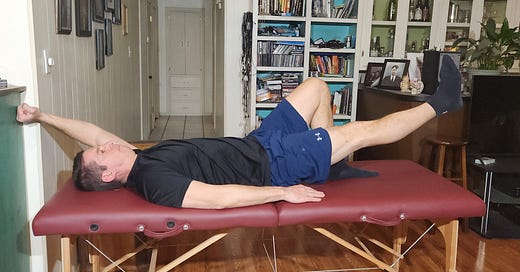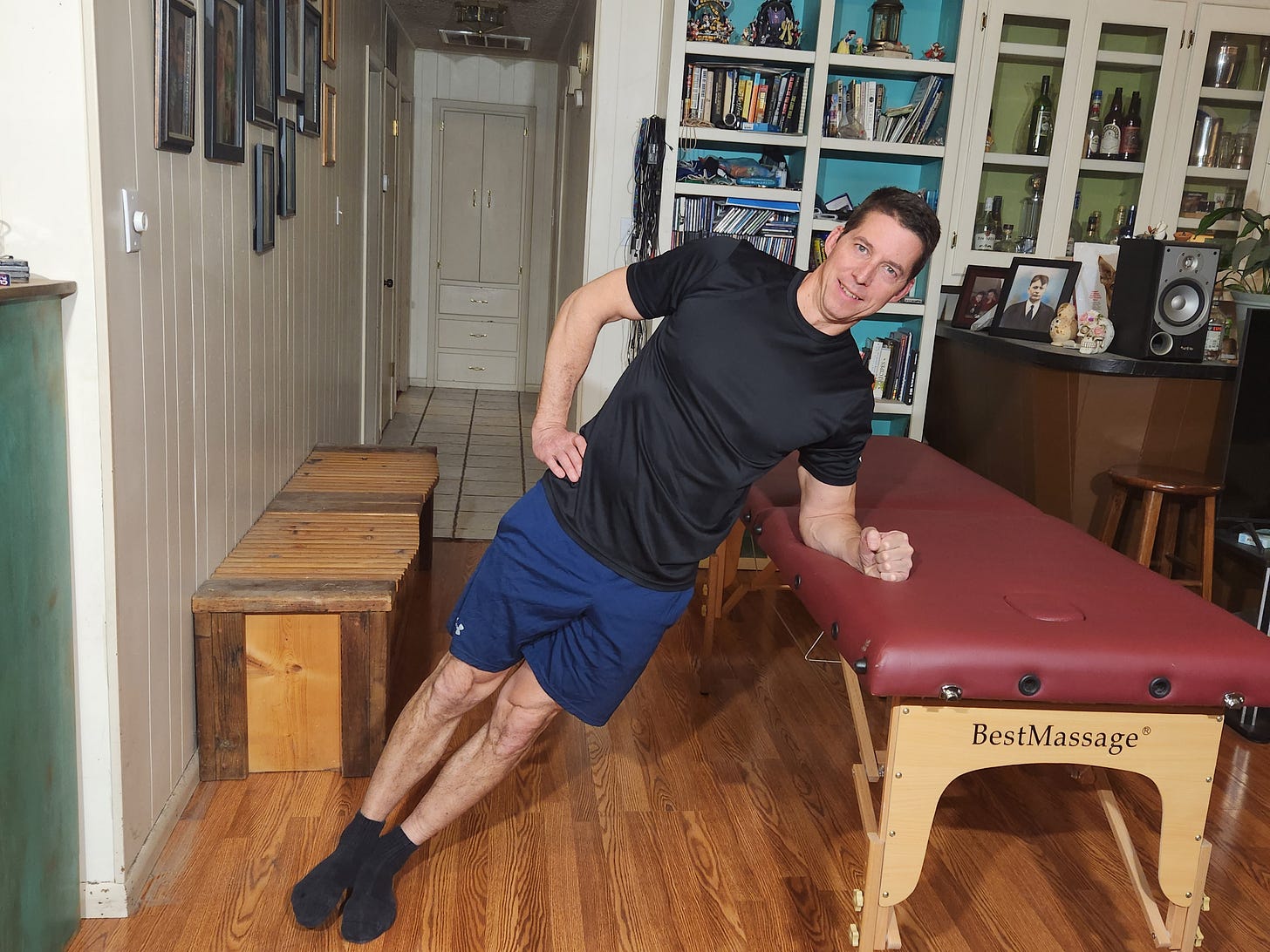This is not medical advice. Do not attempt any of these exercises unless first consulting your doctor and therapist.
I started as a therapist assistant in ‘94. At that time I was given a grainy picture of a model performing “back stabilization.” I worked at a very busy outpatient clinic, sometimes seeing two to four outpatients an hour. I was supposed to teach back stabilization and give them this handout. It sounded correct to me, and I still think the basic premise is correct. We also had people stretch their lower back, hips and legs.
Since that time, and having seen probably a thousand people with low back pain, you start to form some opinions on patterns that you see. These anecdotal stories from experience are not scientific, however the sample size is still one thousand. Some double blind studies that we cite have a sample size of 50, so you can take either with a grain of salt.
I think a good baseline to accept is that the trunk (or core or lower back, etc) is supposed to be a stabilizer for the spinal cord. The vertebrae are like blocks stacked on top of each other. Their job is to protect the spinal cord, and allow the body to move at the same time. Spacing between the blocks allows for nerves to exit the spinal cord to the extremities. Most of our back pain arises from issues with that spacing and alignment.
So the question is, how do we fix that if it becomes a problem? First, this is a great example of prevention is much better than the cure, or “an ounce of prevention…” Back pain can be a horrible affliction to live and work with. Many of the premises and exercises we will review in Part 2 are an excellent way to help prevent these problems.
Back to the fixing part, think of the back as a stabilizer, and not a prime mover. We are supposed to lift with our legs and hips for this reason. When we were kids we performed sit ups. Back then it was not a big deal, we are resilient in youth, and I would argue sit ups are better than video games any day.
However, sit ups are not exercising the trunk muscles in the manner in which they work.
Along with that stabilization picture I was supposed to review, we also taught the patient to stretch their lower back and hamstrings, etc.
For many years I would ask patients with low back pain how they were feeling after completing our sum total of home exercise program, which included low back stretches. Not one patient ever came back and said “I am completely pain free.”
Fast forward 25 years when I focus solely on stabilization with no stretches, and I’ve had dozens of people come back and say they are completely pain free, or their nerve pain in their legs has dropped dramatically. Many of these people had horrible x rays showing poor vertebral alignment. The stabilizing exercises helped pull the spine into better alignment, usually within 4 weeks.
There are also times when McKenzie extensions or hip stretches are necessary for sciatic pain. That needs to be assessed in person.
Sometimes, the sacroiliac, or SI joint needs to be ruled out as a source of the pain,
There is no guarantee that these exercises will work, yet neither is surgery or medication. You have little to lose in trying gentle exercises without pain. And that is an important premise to this routine. It is not a “no pain no gain” mentality. Every progression of back stabilization has to be pain free.
I have been one cog wheel in a messed up machine of low back pain industry, often involving Workman’s Compensation claims. One of the most frustrating observations is people who are sent to pain management. In other words, we can’t help you, you are going to have to learn to live with the pain. That’s easy for those of us not in pain to say. Did the industry really do all they could to help?
The person most responsible for my patient’s improved back outcomes is Stuart McGill. He is a back pain researcher, and author. I highly recommend purchasing his book, Low Back Disorders. You might spend a hundred dollars, but how much is your back worth, and how much are your copays or surgeries? It can be found on his website at backfitpro.com.
McGill refers to increasing “stiffness” in the back to decrease symptoms. In our physical therapy profession, these words hurt our ears. We are always talking about flexibility and avoiding stiffness, however I think McGill is correct in this premise. We just refer to is as active stabilization of the spine by increasing muscle tone.
This next statement is a vastly oversimplified summary of improved back care outcomes. I have always had people perform some type of back stabilization, but it wasn’t until I stopped the stretches that outcomes improved.
That is not to say that flexibility is not important. And once pain is decreased, and stabilization improves, gentle stretches can be re introduced. However you must also listen the the body, and not push stretching into increase pain or decreased stabilization.
Gymnasts and wrestlers are able to be very flexible with their spine because they have amazing core muscle tone protecting the spinal alignment.
The next article looks at some of the specific exercises,
Exercises to decrease back pain
This is not medical advice. Consult your doctor and therapist before attempting any of these exercises. There should be no increase in back pain while performing these exercises. If there is an increase in back pain, stop immediately. Slow speed and perfect form are critical.







